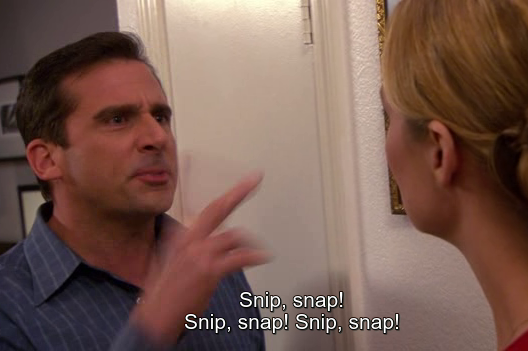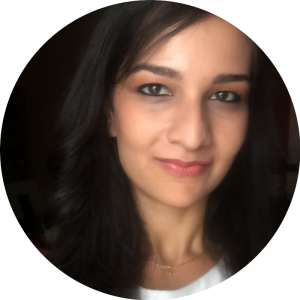Why should you care about the About page?
Your About page is the perfect place to tell your story to your audience in an intimate way. Through sharing your own journey, you are helping them identify what they need, how they relate to you, and how you can fulfill their needs. I’d go one step further and say – they are there to get to know you and to fall in love with you.
Writing out your story is a beautiful opportunity to dust off your mirror of self-reflection and take a good look at your self-image. This process is bound to reinvigorate your sense of purpose and the direction of your coaching business – perhaps even your life.

Those are some solid reasons to devote some time and love to your About page. But it may feel a little intimidating. Where do you begin writing about yourself and how do you distill your ‘self’ down to a single page?
The good news is that you are an expert on you. There’s no one better informed! So summon that confidence in your expertise, and allow me to hold your hand, as I walk you through 6 manageable little baby steps to writing a heartfelt, authentic, and meaningful About page for your coaching website.
Step 1 – Come up with some writing prompts
Open up your Word Processing document and come up with some questions that will serve as your writing prompts. I like to do this with all the articles I write, especially if I’m having trouble getting started. The questions do not have to be perfect and all-encompassing. Their primary purpose is to take away the “Blank Page Blues” and generate some momentum.
Think about your audience. If you are like many coaches, your audience is essentially you, but a few years younger. What if Past You, seeking out answers, encounters Present You? What would the questions look like? Brainstorm!
Here are some prompts for you to use and adapt to your requirements:
- Who is my ideal client and what do I want them to feel when they read this?
- What’s my personal experience with the problems my clients face?
- What sets me apart from other coaches in this field?
- What does my future as a coach/business owner/thought leader in this field look like?
- What am I bringing to the table?
- What are my values?
- How was the idea behind my business conceived?
- How did the idea start to pick up traction in my head? What clues did I receive that this was a good idea?
- How did I manifest the ideas?
- What are some Captain Obvious things I can say about my coaching methodology?
I also love to ask questions which elicit stories:
- “What was the story behind the name?”
- “What was the story of how the founders met?”
Again, the questions don’t have to be extraordinary, or mutually exclusive. It’s okay if there’s some overlap, and it’s okay if you don’t cover every single aspect of yourself. I don’t even think that’s possible! Just get some questions on the page and move on to…
Step 2 – Stream of Consciousness
Now that you have your questions ready, the next step is to answer them, one by one, using one of the most powerful tools available to you: your stream of consciousness.
Select a method of answering that you’re comfortable with. Do you want to take your journal out to the beach/rooftop, write out there with an expansive view and your favourite pen? Do you prefer to record your voice during a leisurely evening walk? (Disclaimer: Make sure you don’t forget to take your questions with you! I am most certainly not speaking from personal experience.)
Perhaps you want to keep it simple and just type out all your answers. There’s no right or wrong way to do this. Choose the method that feels right to you; the one which enables you to flow. Some people might even do a combination of these methods. Go for it!
There is only one rule with this exercise: You are not allowed to censor yourself. Do not use the backspace button, eraser, or re-recording options. Just let it flow. No one’s going to see this but you. You will make mistakes, stutter and stumble over your words, but you need to keep going. Think of this wall of text as the block of marble with which you’ll chisel out your sculpture.

If you typed out your answers on a word processing document, you are ready for Step 3. If you chose any of the other methods, transcribe everything (and I mean everything – no editing yet!) onto your word processing software of choice.
Step 3 – Organise!
Now that you have a whole lot of raw material for your About Page, you can start to organise it in a way that makes sense.
Think again about the type of person who would visit your About page, or the type of person to whom you would send a link to your About page. Surely this wouldn’t be the widest net you cast. These are the select few who want to know your backstory. So don’t be afraid of getting a little personal and showcasing You. With that in mind, you can start to give some structure to your content.
A big part of any type of organising is ruthlessly discarding the stuff you don’t need.

Don’t be afraid of leaving out parts that are not relevant. Elizabeth Gilbert, renowned author of Eat Pray Love and many other NYT Bestsellers, said in an interview that she spends years researching the subject matter for each book, and ends up using only about 1/5th of it! She emphasizes that this doesn’t deter her from going hard on the research in the future. Having all that material simply meant she would have everything she needed on hand, so she could decide which parts would be important and sensible enough to make it into the book.
This process of organising allows you to examine everything closely – to refine your own values and self-image. So don’t be afraid of getting rid of the parts that don’t really connect and resonate with you. Double down on the parts that do!
We often put a lot more thought into our written words than into casual conversation. The tone of the About page would ideally be a hybrid of the two. It’s more refined than casual conversation, but it still sounds like you; a thought-through, confident version of you.
So when you have your first draft, try speaking it out loud as though you’re talking to a person or group of people. If it doesn’t sound like you, then it’s probably not as clear as it could be. Simplify until it sounds like you. If you’re feeling stuck, you can combine this simplification with the next step.
Step 4 – Get Some Feedback
Now that you have spent plenty of time drafting the About Page, it’s time to emerge from your writing bubble. This is the part where you get a handful of people to read it and give you feedback. I love using Google Docs for this. It’s incredibly easy to share and collaborate on it by leaving comments, suggestions, and highlights.

You want to get the opinion of a bunch of different people so that you can look for patterns in feedback. Ask your friends, family, fellow coaches, and some previous clients. All feedback is worth examining, but you certainly need not use all of it. Just like you did with the research, feel free to exclude it if it doesn’t sit right with you. As we’ve already established – you are the expert here.
Step 5 – Let It Sit, Then Edit
You have likely sat down to write a deeply personal piece at some point in your life. Perhaps it was a statement of purpose for your top choice college, or a cover letter for your dream job, or even a love letter. When working on a piece of this nature, it’s important to take a break between edits so you can revisit it with fresh eyes. Get some sleep, let your magical brain do its consolidative thing.
Another reason to take breaks and give it time is that your current state of mind will always influence your writing. I like to have a daily readthrough of the page for a few days in a row, to test how it feels in different “moods”. Our state of mind may change from day to day. Our core values, mission, and purpose don’t. If it rings true and sits well with you for a few consecutive days, you’re done.
I’ll note that allowing yourself some time to edit is very important, but it can be a slippery slope to procrastination. So give yourself a few days, but have a strict timeline.
Step 6 – Hit ‘Publish’!
If you have followed steps 1 through 5, it’s time to hit the publish button. Remember: you are not getting any of this engraved on a diamond. You can always change it later – and you will! Your About Page will evolve over time, because you will evolve over time as a coach. You’ve given it everything you’ve got, so release the pressure of having it down perfectly. Applaud your own efforts, hit Publish, and reward yourself with a toast!

Neha Sinha
I am a seasoned content writer and editor with a passion for helping people find their authentic voice and deliver a clear message. I believe the right series of words is a magical package that can bolster the quality of our thoughts, and therefore our lives.
I am also a certified fitness coach. My approach entails educating clients on nutrition and exercise biology, while facilitating the inner work that is key to changing behaviour and habits in the long run.
Learning is my drug of choice, and I do my best to leave people better than I find them!

